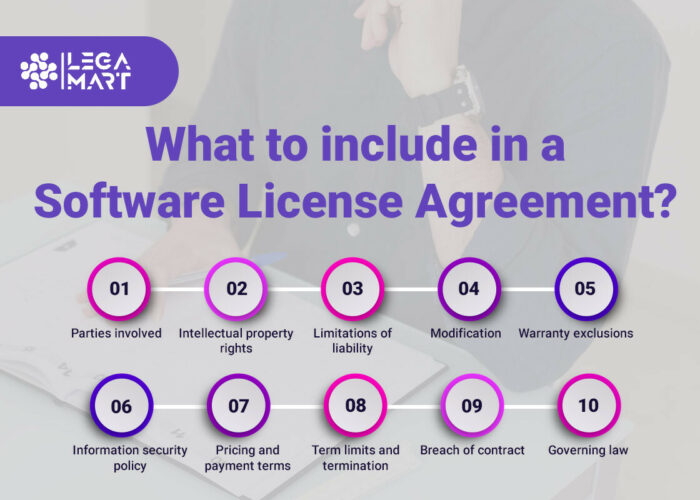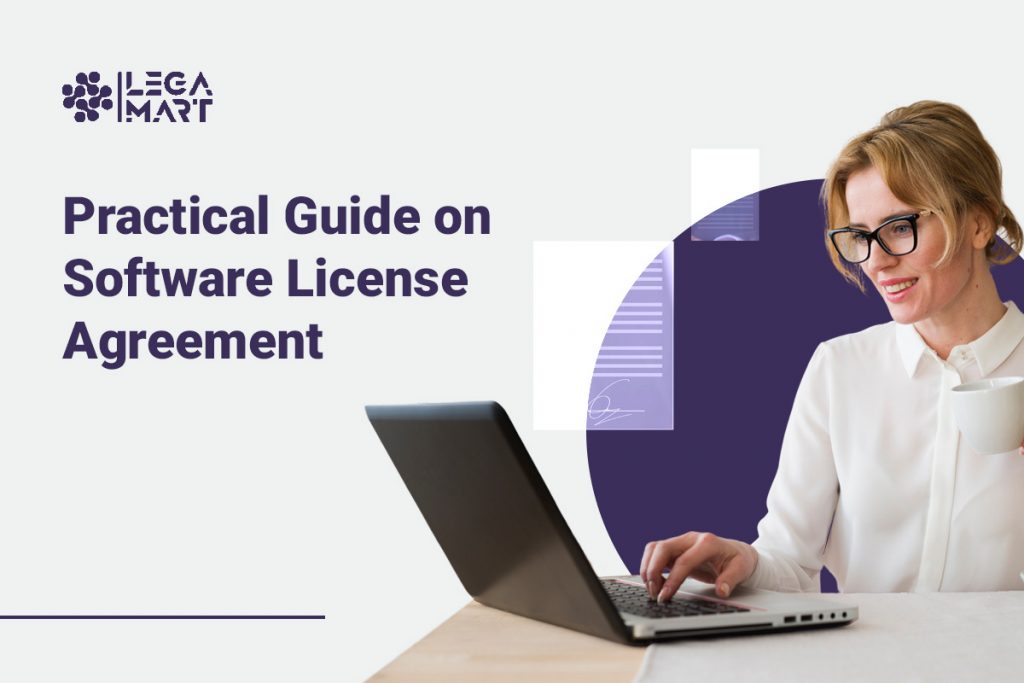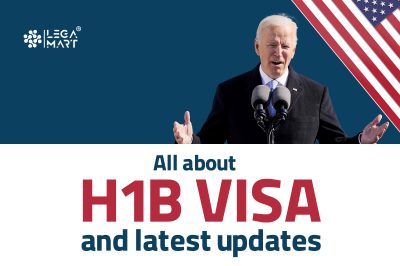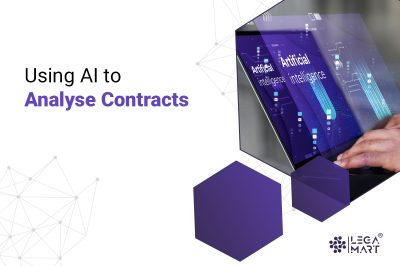What is a Software Licensing Agreement?
A software license agreement is a legally binding contract between developers and users. Its primary purpose is to safeguard the legal rights of both parties and prevent unauthorized software distribution. These agreements are created by businesses to protect the developer’s intellectual property (IP) rights and minimize the potential liability for any damages that may result from using the software.
What are the types of Software Licensing Agreements?
While the conditions and permissions of individual software licenses may vary depending on the specific software and its developer, they can generally be classified into one of five categories. It is essential to identify and comprehend the type of license associated with your software. These five categories of software licensing are as follows:
Public domain license
A public domain license is the most unrestricted type of software license available. It allows anyone to use the software for personal or professional purposes without limitations or needing to pay its creator. When software has a public domain license, it is often open source, meaning that users can modify or build upon the code to customize its functionality or create new software.
GNU/Lesser general public licenses
The Free Software Foundation released the GNU Lesser General Public License (LPGL), a software license. Derived from the GNU General Public License (GPL), the LPGL enables developers to utilize open-source libraries in their software code without being obligated to release the source code they used to create those components.
Under the LPGL, when creating new work using software covered by this license, developers are not required to distribute the resulting software under a compatible license unless it is a derivative work of the original software. For instance, a company can protect a program that dynamically links with an existing LPGL library by adopting a more restrictive license that does not violate the original library’s license terms.
Permissive license
These licenses are widely adopted among open-source software licenses and are characterized by their minimal restrictions and obligations on the distribution and modification of the software. Permissive licenses are among the most common types of open-source software licenses.
Copyleft license
Copyleft licenses, unlike permissive licenses, are characterized as reciprocal or restrictive licenses. While they share similarities with the Lesser General Public License (LGPL), copyleft licenses have more stringent requirements that must be followed. One notable aspect is that they allow users to modify and use proprietary code; however, the condition is that any resulting software must be released under the same guidelines.
This approach fosters a more open and collaborative development environment, as these new works become sources of inspiration and assistance for others who create products. Subsequently, these creators release their work under the copyleft license, contributing to the growing pool of shared resources.
Proprietary Licenses
Proprietary software licenses represent the most restrictive type of license. These licenses prohibit software copying, modification, and distribution, making such actions illegal. By employing proprietary licenses, software owners obtain the highest protection against unauthorized use or misuse of their software.
What is the purpose of a Software Licensing Agreement?
A software license agreement serves several key purposes, as outlined below:
Define installation boundaries: The agreement establishes where users can install and use the software.
Restrict installations: It limits the number of end-user installations or devices on which the software can be installed, preventing unauthorized use.
Govern user engagement: The agreement outlines how users can engage with the software, including usage restrictions or guidelines.
Control copies, modifications, and redistributions: It specifies whether users can make copies, modify the software, or redistribute it to others.
Communicate copyright protection: The agreement communicates the copyright safeguards applicable to the software, informing users of their obligations regarding copyright laws.
Clarify software ownership: It delineates the ownership rights of the software, specifying whether it belongs to the licensor, the user, or a combination of both.
Set agreement duration: The agreement imposes a timeframe outlining the duration during which the terms and conditions of the agreement are valid and enforceable.
What to include in a Software License Agreement?

The checklist below can be used by parties who intend to enter into a software license agreement:
Software license agreement elements
When entering into a software license agreement, understand the three key elements that must be discussed and included in the agreement i.e price, performance, and scope.
Ensure the scope covers factors such as; the functionality of the software; the costs associated with the software license and maintenance services; as well as the performance, which refers to the software’s ability to adhere to the specifications outlined in the agreement.
The scope should also consider the location of the software. Whether it may be restricted to specific machines or designated locations determined by the licensee. Alternatively, whether it could be hosted by a third party or in a cloud environment.
Consider whether there are any territorial restrictions on the usage of the software
In cases where the licensee must provide access and usage rights of the software to third parties, such as consultants or outsourcers, it is important to address these arrangements. Some licensors may require a distinct third-party access agreement, wherein the licensee assumes responsibility for the third party’s utilization and potential misuse of the software.
If any third-party software is included, it is necessary to clarify whether it is considered part of the software being licensed by the licensor.
While negotiating the agreement, specific terms are contingent upon factors such as:
- The agreement will vary based on the particular software being licensed, as different software may have different licensing requirements and restrictions.
- The agreement will outline the intended purpose or use of the software by the licensee. This may include limitations on the number of users, permitted locations, or specific functionalities.
- The agreement will specify the level of technical support needed from the licensor, such as maintenance, updates, or troubleshooting assistance.
- The agreement will include provisions regarding the license fees. It may specify whether the fee is a one-time payment, recurring payment, or based on usage or other factors.
Additionally, in order to ensure a successful software licensing and service initiative, it is crucial to establish clear expectations aligned with these core elements. Once your standards are defined, you can inquire about the vendor’s experience, software functionality, and the budget and timeframe for the project.
Software
In the context of this software license agreement, it is important to clarify the definition of “software.” This definition should indicate whether it encompasses everything that the licensee is ordering or that the licensor is delivering.
The method of software delivery should be addressed as well.
Understand the software payment modes and the license fee clause as it varies based on the licensing model, such as whether it is a subscription-based or one-time license fee.
Additionally, the payment clause must outline various details such as:
- A clear description of how the fee is to be paid, such as through electronic funds transfer or any other designated payment method.
- Specify when the payment is expected to be made i.e payment timing, for example, is it due upon signing the agreement, on a recurring basis, or at specific intervals throughout the license period.
- Clear description of the consequences if payment is made late or not made at all.
- Determine whether the license fee is subject to any changes and, if so, specify the basis or criteria for such adjustments, such as annual increases, changes in usage levels, or market fluctuations.
Furthermore, it is crucial to determine if the licensee will receive the software in any format other than object code, such as source code or any other proprietary format.
Certain restrictions typically apply in a software license agreement. The licensee is often limited in terms of how they can use the software, with restrictions typically imposed on its use for internal business purposes only.
The licensee is typically bound by restrictions on copying, except for what is expressly permitted, and is generally prohibited from reverse-engineering, decompiling, or disassembling the software.
Any modifications are typically limited to specific rights explicitly stated in the accompanying documentation, if provided.
Transferring, sub-licensing, or granting third parties access to the software is normally prohibited for the licensee. However, exceptions may be considered, such as allowing the licensee to move the software between affiliated entities or into new territories. It is important to evaluate how certain organic changes, such as mergers, the sale of a business, or divestitures, may impact the licensee’s usage rights.
Intellectual Property Rights in Relation to the Software
In most circumstances, the owner or licensor of software holds the copyright to the source code. To address the transfer of ownership and the grant of limited rights to end-users, an intellectual property clause can be included in the agreement.
The clause outlines the manner in which the licensor relinquishes its ownership rights and provides restricted rights to the end-users. Equally, it establishes the framework for granting the necessary permissions.
Testing acceptance and Free trials
Acceptance testing may be needed when significant customizations are necessary for the licensee to use or integrate the software. During acceptance testing, the performance and conformance warranties and support and maintenance fees usually apply after the testing is successfully completed rather than when the licensing agreement is signed.
Additionally, customers and vendors engage in testing acceptance to verify if the software aligns with the established standards outlined in the contract. It is common to conduct acceptance tests as part of this process. The first phase involves allowing the software to go live, while the pre-stage entails testing the software under various conditions. The second phase involves testing the software during its live period.
When offering a complimentary trial of your software, it is essential to precisely define the terms and conditions of the trial within the software license agreement. This involves clearly stating the restrictions and boundaries of the trial period, specifying whether there is an option to extend the trial duration, and explicitly explaining whether payment for software usage will be automatically charged once the trial period ends.
Term, Termination and renewal in Software License Agreements
Software license agreements often have a specified term that allows licensees to order additional licenses without separate agreements. Reviewing the agreement’s duration, individual licenses and support obligations is crucial for licensees to make necessary adjustments.
The software license agreement should encompass comprehensive provisions that outline the effective commencement of the license and the circumstances that may result in its termination. For example, termination provisions address various issues, including breach and termination at the licensee’s convenience
Examining the termination provision helps understand how the licensee’s licenses will be affected if the licensor terminates the agreement for breach. License rights typically terminate when the agreement is terminated for breach by the licensor, but not when terminated by the licensee for breach.
Licensees should consider their needs in case of agreement termination, including transition assistance for software or data migration and inclusion in disaster recovery and business continuity plans.
When software is licensed for a specific duration, it is essential to include clear provisions in the agreement regarding the renewal period and the procedures for both voluntary and automatic renewal. This ensures that the parties understand the terms and conditions for extending the license beyond the initial fixed period.
Warranties and Remedies
The licensor may provide a warranty stating that the software is free from significant defects that could have a negative impact on the end-user’s experience.
Under maintenance and support clauses, licensees may receive a service credit or other limited rights as a remedy. However, licensees often desire warranties that grant them the right to terminate the license agreement if the warranty is breached. These warranties are typically qualified, specifying that the software will perform or conform “substantially” or “in all material respects” to the software’s documentation.
In software license agreements, an exclusive remedy is commonly offered, enabling licensees to request a refund if the licensor fails to resolve software issues, though the refund amount may depend on the severity of the problem. It’s important to note that accepting the refund usually requires ceasing software usage and terminating the license agreement, which may not be preferred by all licensees seeking alternative options for resolving warranty issues.
What to Look for in a Software License Agreement?
When entering into a software license agreement, it is essential to consider some factors that can help protect against unexpected legal and financial risks and ensure the agreement meets present and future needs. Some of these factors include; –
Software
To prevent confusion and potential conflicts, parties need to specify the software being licensed in the contract, especially when it undergoes continuous development with multiple contributors. The agreement should also address the parties rights and obligations in case of software upgrades, renaming, or transfer to third parties. Additionally, it is important to consider any open-source software incorporated into the software and establish provisions for liability allocation in case the open-source software causes malfunctions.
License Restrictions
A software license agreement allows customers to use the software within defined limitations, such as purpose, territory, time, and users. Evaluating how these restrictions align with the customer’s current and future needs is crucial, especially when changing IT projects or corporate restructures. Suppliers should also update their agreements to incorporate evolving market practices, including considerations like global customers, cloud computing, and BYOD networks.
Pricing mechanism
Software license agreements employ diverse pricing mechanisms. For example, fees may cover a specific period of use, along with additional fees for support, maintenance, or expanded usage. When determining the pricing mechanism, parties must consider both current and future potential use of the software. Therefore, regular review of the pricing mechanism is essential to ensure it remains suitable for the evolving customer and supplier needs.
Monitoring use and compliance
Clearly defining how software usage will be measured is crucial before finalizing an agreement. The agreement should include provisions for monitoring compliance with license restrictions. Disputes often arise when parties interpret usage metrics differently, such as data records, fields, or user records. Metrics should be clearly defined to minimize ambiguity.
Both parties should have reliable systems in place to monitor software use. Regular reports and audits can provide transparency and help assess actual use against contractual permissions. Failure to self-audit may lead to unexpected costs, breach of contract, or strained relationships between the customer and the supplier.
Dispute resolution
Including a clear dispute resolution process in a software license agreement can minimize disruption, with steps such as notice, escalation, and alternative resolution methods like mediation or arbitration. Termination should be carefully considered, as it carries risks and may not be a favourable solution. Instead, parties can negotiate variations to accommodate changes, ensuring they are documented and address relevant issues. By focusing on these aspects, software license agreements can be better protected against disputes, minimizing expenses and stress for suppliers and customers.
How does a Software Licensing Agreement work?
A Software Licensing Agreement outlines the rights and obligations of the developer and the end user. Important clauses related to the use and payment of the software are covered within the agreement, including but not limited to the following:
- When and how often can the software be accessed and/or downloaded?
- Payment of the software license.
- Access to the source code of the software.
More often, the agreement takes the form of an end-user license agreement, considering that the terms give a detailed understanding of the relationship between the user and the software developer. The agreement also includes a product or license key, which is useful for identifying and verifying a user’s version of the software, allowing the user to continue using the software across multiple devices.
The main aim of such an agreement is to protect your software from any infringement activities, allowing the rights to remain with the software developer.
From images and videos to written content, the risk is omnipresent. Explore our blog on “5 Tips For Copyright Infringement: Social Media Channels” to gain valuable insights into navigating the legal nuances surrounding intellectual property on these platforms.
How to Negotiate a Software Licensing Agreement?

A meticulously negotiated software licensing agreement becomes vital to avoid any potential challenges and disruptions in the future. A strongly negotiated software license agreement can increase IT agility, accelerate digital transformation, smooth the compliance procedure, and uncover areas of toxic spending that need attention. Here are some tips to help you negotiate a software licensing agreement:
- Understand the pricing and use schemes. Since the software is not a tangible, singular item, the pricing structure for obtaining the right to use the product varies. It can be licensed to a user, or it can be provided as a service or both. Therefore, obtain clarity on how the pricing structure works. Failure to do so can result in frustrating restraints or even unexpected extra charges, eventually leading to lawsuits. Smart businesses often use IT price benchmark analysis to eliminate the possibility of overspending. The analysis ensures that you pay equal to or better than best-in-market pricing.
- Break down bundled pricing. Software vendors often prefer bundled pricing structures. However, accepting this makes it difficult to understand what you are paying for and the value of each part of the software. Further, beware of offerings such as “at no additional charge” combined with bundled pricing since what might seem like a good offer to you might just be a tactic to make you pay more than what should be paid. Therefore, I prefer item-level pricing and discounts, which helps in the evaluation of the true value of the organization.
- Align software use with best-fit license and subscription options. Ensure that you undertake software license optimization procedures. Most companies often overspend by paying for unused licenses and subscriptions or using unnecessary higher-level licenses. To avoid this, fully understand your licensing options (including details about the implications of virtualization, indirect access, etc.) and identify the best fit for your business requirements.
- Negotiate favourable Renewable Rights. The extent of the negotiation of your renewal rights has a direct bearing on your costs. Vendors are aware that the renewal is a much-preferred option over entering into a completely new agreement with a different vendor, allowing them to extract higher rates at renewal time. Therefore, consider negotiating caps on annual renewal pricing increases.
- Inspect product use rights and online services terms. Mostly in renewals, it becomes important to have a compliance house ready to ensure that the vendor has adequately complied with the legal requirements associated with the software. This can be done through an internal self-audit, which helps uncover potential risks before the renewal procedure.
- Pay attention to clauses governing the software license audits. It is important to ensure that all audit rights are stipulated and agreed upon with every enterprise software vendor involved. Some common aspects that must be included are:
- Time within which a company must respond to a formal audit request.
- Information on the vendor resources which have the authorization to audit.
- Data is to be provided during the procedure.
- How arbitration situations shall be handled.
Understanding your audit rights before an official audit helps improve the engagement rules that the parties shall use.
Why is it important to understand Software Licensing Agreements?
Having a software license agreement in place is crucial for several reasons, including the following:
Licensing instead of selling
You retain full ownership rights by offering licenses for your software instead of selling it outright. This grants you greater control over its usage and distribution. In addition, licensing allows you to impose restrictions on how the software is used, enabling you to generate ongoing revenue by licensing it to multiple users.
Protection against software abuse
Without a signed agreement, customers could potentially replicate or copy your software for their benefit. This unauthorized duplication can result in financial losses and unfair competition. A software license agreement safeguards against such abuse, ensuring that your business interests are protected.
Limitation of liability
As a software developer, it is crucial to limit your liability to mitigate the risk of lawsuits. By including liability limitation clauses in the license agreement, you can protect yourself from legal disputes arising from software-related issues. It is important to ensure that the liability clause is fair to both parties involved.
Mitigation of warranty claims
Customers may have unrealistic expectations about the performance of your software, leading to potential warranty claims. Including disclaimers of warranties in the software license agreement can protect you from such claims. Users are required to accept the software as-is, reducing the risk of being held responsible for unforeseen issues or downtime.
Discontinuation of unauthorized use
A software license agreement should grant you the ability to revoke or suspend licenses at any time and for any reason. This provision enables you to maintain complete control over your software. If the need arises to terminate a license, referring customers to the relevant clause in the agreement helps resolve any disputes.
How to create and draft a good Software Licensing Agreement?
The following are some of the most critical clauses that must be drafted in a good software licensing agreement:
Confidentiality clause
This includes source code, invention records, research reports, production specifications, models, data for a licensee, software for a licensor, etc. Both parties have an obligation to protect all intellectual property associated with the software, especially trade secrets, from any third party. The clause is used to impose restrictions and requirements on the “Receiving Party” regarding the use and disclosure of the confidential information of the “Disclosing Party”.
A common way to draft this clause is as follows:
“Confidentiality obligations: The Receiving Party, from the commencement date, undertakes to:
- Maintain all the Confidential Information obtained directly or indirectly from the Disclosing Party confidential and secret during the term of this agreement and therein to respect the Disclosing Party’s rights;
- Disclose such Confidential Information to the extent that such disclosure is reasonably necessary for this agreement only to those of its employees, contractors and sub-licensees pursuant to this agreement; and
- Secure that all its directors, officers, employees and professional advisors comply with the provisions of this agreement to whom disclosure of or access to such Confidential Information has been given.“
Licensing Fee
This clause includes details about the amount paid to an entity for a certain right or ability. Here, the amount is paid for obtaining the privilege to use, access, or maintain software programs. A common way to draft this clause is as follows:
“Fee: The Licensee shall pay to the licensor the amounts set out herein below upon achievement of each of the milestone events set out in the following table:
(table with ‘milestone event’ on one side, and ‘amount to be paid’ on the other).”
IP indemnification
This remains one of the most negotiated clauses of a software license agreement. The claims or liabilities arising out of the licensee’s use of the licensed software are covered by the licensor’s indemnification, which includes claims against infringement of third-party intellectual property rights by the licensed technology. Both parties are obligated to maintain third-party liability; otherwise, the breaching party has to face legal proceedings for breach of IP rights.
A common way to word this clause is:
“Indemnification: The Licensee shall indemnify the licensor against all third party Claims that may be contented against or suffered by the licensor that relates to:
- the use by the licensee or any of its sub-licensees of the Licensor Software;
- the development, manufacture, use, marketing or sale of, or any other dealing in, any of the Licensed Products, by the licensee or any of its Affiliates or sub-licensees, or subsequently by any Customer or any other person, including claims based on product liability laws; or
- breach of any laws or regulations by the licensee within the territory.”
Warranties
There is always a possibility that a few customer expectations are not fulfilled. Therefore, the licensor is expected to negotiate the terms of the agreement that includes a disclaimer of warranties that would require the customer to accept it as it is or as available. This helps in passing the risk to the users. The clause can be drafted as follows:
“Warranties: The Licensor warrants and undertakes as follows:
- it is the proprietor of any copyright that subsists in the software;
- It has not done, and shall not do nor agree to do during the term of this agreement, any of the following things if to do so, would be inconsistent with the exercise by the licensee of the rights granted to it under this agreement, namely:
- granted or agreed to grant any rights to use the Licensor Software in the Field in the territory to any other person; and
- assigned, mortgaged, charged, or otherwise transferred any copyright that subsists in the Licensor Software in the Field in the territory or any of its rights or obligations under this agreement.”
Limitation of Liability
This clause sets out that the licensee has accepted the software the way it is, and therefore, the licensee will not be able to sue for damages, and the licensor does not make any warranty for the software and its usage.
The licensor can negotiate for unlimited liability, including both direct and indirect damages, arising from the breach of a term of the agreement. Usually, the limited liability does not extend to a breach of IP rights, confidentiality obligations, or the grant of a license.
It may be drafted in the following manner:
“Liability:
- To the extent that either of the Parties has any liability in contract, tort, or otherwise under or in connection with this agreement, including any liability for breach of warranty, their liability shall be limited in accordance with the following provisions of this clause. However, the limitations and exclusions of liability in this clause shall not apply to any indemnity against third-party Claims given under clause ____.
- The liability of the licensor shall be limited to an amount equal to the total amount that the licensor has received from the licensee during the period of __ years preceding the date on which the liability arises, or ____, whichever is the higher.”
Term and Termination
This clause details the grounds and procedure to be followed by the parties in case they wish to terminate the agreement. The licensor may include that they can revoke or terminate the software at any point in time without any repercussions.
Ensure care while drafting a software licensing agreement since the agreement dictates the rights and relationship of each party over its term. While the use of templates always remains an option. However, a more effective way is to enlist an experienced software license agreement lawyer, especially considering that intellectual property rights are on the line in such cases. LegaMart’s experienced team of lawyers can help you draft, negotiate, and execute a software licensing agreement per your requirements.
Conclusion
To conclude, when a developer or owner of software wants to distribute it without selling it, they enter into a software license agreement. The agreement specifies the terms and conditions for using the software and safeguards the rights of both the owner and the user. The agreement safeguards the copyrighted software from fraud and ensures that the creators’ efforts and money are not wasted.
The software license agreement is a crucial tool for protecting the owner’s rights since it prohibits software misuse, permits software licensing, allows disclaimers of warranties, limits the owner’s liabilities, and allows termination of usage. They are categorized as proprietary software licenses, free software licenses, and open-source software licenses based on the demands of the software licensing. Proprietary software licenses, which include limited terms and conditions, are widely used for distributing operating systems such as Mac and Windows.
Non-exclusivity clause, non-transferability provision, rights clause, modification clause, breach of contract clause, limitation of liability clause, and governing law clause are crucial clauses that every software license should include. We at LegaMart assure you that you can get any valid agreement prepared, whether a distribution or software licensing agreement, from experienced lawyers on our platform. We offer a quick meeting with lawyers from across the globe who can guide you in preparing a valid agreement. You will have to fill in a few details, and you can have a quick meeting with the lawyers. So what are you waiting for? Get the agreement prepared by our lawyers at a lower cost within the time frame.
Frequently Asked Questions
Where to display a Software Licensing Agreement?
Your Software license agreement should be placed on your website’s account login page, checkout screen, or a separate legal page. You can also include your license in desktop or mobile apps, such as menus.
What does a Software end-user license agreement indicate?
A software end-user license agreement is a legal agreement between a software developer and a software product’s end user. It describes the terms and circumstances under which the software can be used and any limitations on its use.
What is the difference between Eula and Software Licensing Agreement?
Perhaps the most important distinction between a EULA and a software license agreement is that a EULA is frequently intended for circumstances where many users may be continuously using the programme. In contrast, a software license agreement is commonly used for business-to-business, generally for finite engagements.
What is a License Agreement for software?
Simply described, a software license agreement is an agreement between the company and your customers to use software to which you have rights. It enables your consumers to use your software and explains how they can do so.




